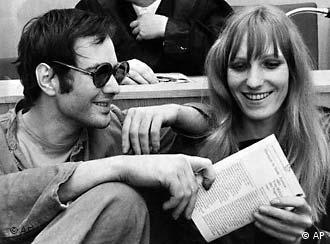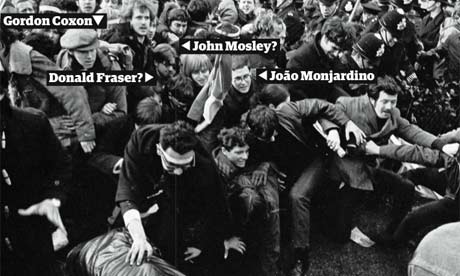
Yes, the "right wing" also promoted protests during 1968. Exactly 45 years ago (on April 29, 1968) a group of 300 right-wing undergraduates calling themselves the "Majority Coalition" organized an occupation in Columbia University, in response to what they perceived as administration inaction about the "left wing" protests in the campus.
This group was led by Richard Waselewsky and Richard Forzani and were not necessarily opposed to the spectrum of goals enunciated by the demonstrators, but were against to the occupation of University buildings.
Their action cause even more tension in the university: the "Coalition" formed a human blockade around the primary building, Low Library. Their stated mission was to allow anyone who wished to leave Low to do so, with no consequence. However, they also prevented anyone or any supplies from entering the building.
As a result fo this action, after three consecutive days of blockade, a group of protesters attempted on the afternoon of April 29 to forcibly penetrate the line but were repulsed in a quick and violent confrontation. In addition to fearing that Harlem residents would riot or invade Columbia's campus, the Columbia Administration also feared student on student violence. So at 5:00 PM of that day, 45 years ago,the Coalition was persuaded to abandon its blockade at the request of the faculty committee, who advised its leaders that the situation would be resolved by the next morning.
The "solution" was the use of even more violence. Next day, April 30, the police quashed the demonstrations with tear gas. Approximately 132 students, 4 faculty members and 12 police officers were injured, while over 700 protesters were arrested. Violence continued into the following day with students armed with sticks battling with officers. Frank Gucciardi, a 34 year old police officer, was permanently disabled when a student jumped onto him from a second story window, breaking his back.
So, became clear that 1968 was not calm for anyone. The "right wing" also protested. Well, no surprise, since we were in the middle of the year that changed everything...




